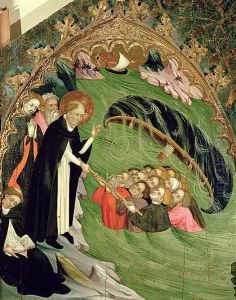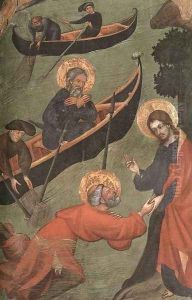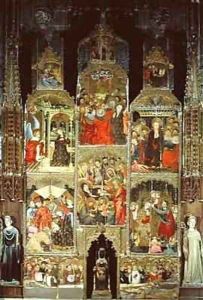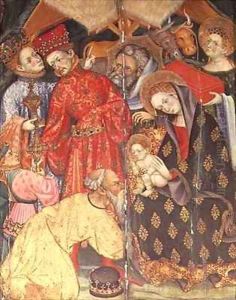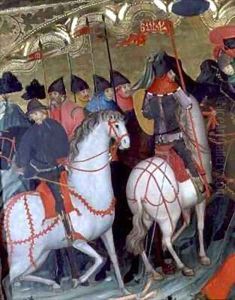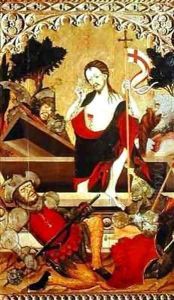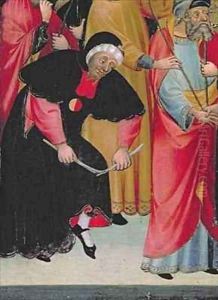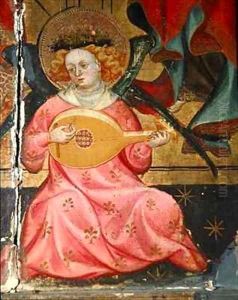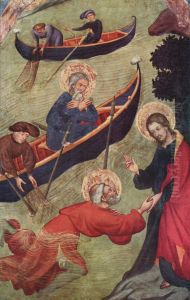Lluis Borrassa Paintings
Lluís Borrassà was a prominent Catalan painter of the Gothic period, particularly noted for his significant contribution to the Catalan school of painting. Born around 1360 in the region that is now modern-day Spain, Borrassà's life and career were deeply intertwined with the political and cultural developments of the Crown of Aragon during the late 14th and early 15th centuries.
Borrassà's early training and influences are not thoroughly documented, but it is believed that he was either a pupil or a close follower of the style of Jaume Serra, another influential painter of the time. Borrassà's work is characterized by a blend of Italian and Northern European artistic elements, which was typical of the International Gothic style prevalent throughout Europe during that period. His paintings are known for their refined detail, expressive figures, and the use of gold leaf, which adds a rich decorative quality to his work.
The majority of Borrassà's oeuvre consists of religious panel paintings and altarpieces, which were commissioned by various churches and monasteries across Catalonia. Among his notable works is the altarpiece for the church of Sant Pere de Terrassa, which showcases his skill in narrative representation and his ability to create devotional images that resonated with the faithful of his time. His son, Joan Borrassà, was also a painter and continued his father's artistic legacy, often collaborating with him on various projects.
Lluís Borrassà's impact on Catalan painting is evidenced by his prolific output and the number of his works that have survived. His style evolved over his career, showing an increasing sophistication in composition and a greater emotional depth in the depiction of religious subjects. Borrassà's work provides a valuable insight into the visual culture of the late medieval period in Catalonia and reflects the religious and social ideals of his time.
Borrassà's death in 1424 marked the end of an era in Catalan Gothic painting, but his influence persisted through his son and the many artists who were inspired by his approach to composition and storytelling through art. Despite the lack of extensive personal records, Lluís Borrassà's legacy as a master of the Gothic style endures, and his works continue to be studied and admired for their artistry and historical significance.
